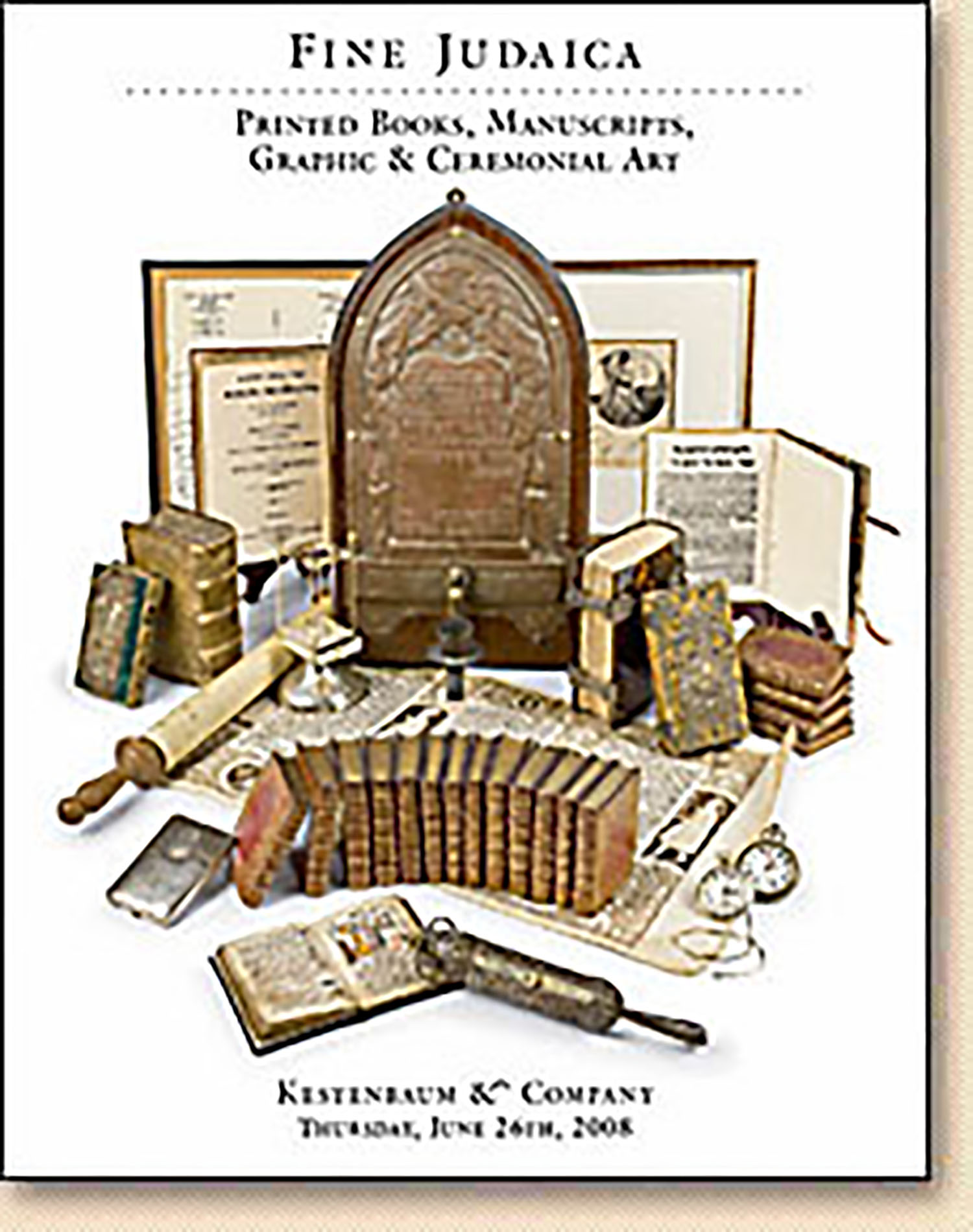Sneersohn, H[Ayim] Z[vi]. Palestine and Roumania: A Description of the Holy Land, and the Past and Present State of Roumania, and the Roumanian Jews.

AUCTION 40 |
Thursday, June 26th,
2008 at 1:00
Fine Judaica: Printed Books, Manuscripts, Autograph Letters, Graphic & Ceremonial Art
Lot 28
(AMERICAN JUDAICA).
Sneersohn, H[Ayim] Z[vi]. Palestine and Roumania: A Description of the Holy Land, and the Past and Present State of Roumania, and the Roumanian Jews.
New York: Hebrew Orphan Asylum Printing Establishment 1872
Est: $3,000 - $5,000
PRICE REALIZED $3,750
Hayim Zvi Sneersohn of Jerusalem was a fourth-generation descendant of R. Schneur Zalman of Liadi, the founder of Chabad Chassidism (through his son Moshe). After the apostasy of R. Shneur Zalman's son Moshe, his wife and children (who remained within the Jewish fold) settled in Eretz Israel. Sneersohn undertook far-reaching fund-raising missions to both the Near and Far East on behalf of Colel Chabad and others. Whilst on these lengthy trips he conceived the notion that the Redemption of the Jews would come about, not through Messianic forces, but in a natural way, beginning with small gestures and eventually resulting in the complete Redemption of the Jewish People.
Sneersohn felt that in order to realize his plan, he must obtain the active assistance of the gentile nations of the world, to garner not just financial support from Jews but also aid and encouragement from Christian political and ecclesiastic leaders. After having been successfully feted in Australia, he travelled to America, where he was honored with the opportunity to meet and later correspond with President Ulysses Grant. Later, he was even granted citizenship of the United States.
The present volume records a selection of letters and articles on the Jewish presence in Eretz Israel, “delivered by the Author during his sojourn in the United States, before intelligent and appreciative audiences in different large cities of this glorious Union.” The book also details journeys by Sneersohn to Egypt, Persia, India and Australia, as well as an attempted mission to China.
The volume concludes with Sneersohn’s towering efforts to focus the attention of America upon the tribulations suffered by the Jews of Rumania. “My faith in the liberality of this blessed land (i.e. America), and above all in the mercy of the Lord my God, was not shaken. I knew that the Government of this country would not be deaf to any cry for help in the cause of humanity and justice.” Indeed Sneersohn’s efforts resulted in President Grant appointing a Jewish consul to Rumania, Benjamin P. Peixotto, to effect relief for the suffering Jews.
Among several approbations at the beginning of the volume is a surprising invitation from Brigham Young, affording Sneersohn the opportunity to address the Mormon Congregation in their Temple in Salt Lake City, Utah.
Upon his return to the Holy Land, Sneersohn discovered his activities had aroused the opposition of the communal heads in Jerusalem and therefore he felt compelled to move away. Choosing to settle in South Africa, he died there in 1882.
It seems clear that Sneersohn was unaware of the thinking and writings of others, such as Alkalai and Kalischer who were working in the same proto-Zionist direction. Sneersohn apparently seems to be a precusor to the late twentieth-century Chabad notion of broadly disseminating a pro-active Jewish Messianic message to the world.
See I. Klausner, Rabbi Chaim Zvi Schneerson (1943); and Yaari, Sheluchei Eretz Yisrael, pp. 816-19.
